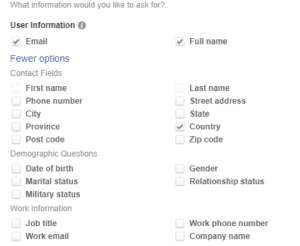
6689062 / Pixabay
I started the year off with a new practice. Or should I say, an old practice rejuvenated. And that practice is journaling.
Journaling is a great technique for agile coaches. It provides good materials for stories, insights for performance improvement and serves as a way to make a quiet impact on teams.
I’ve Kept Journals for Years!
I used to journal all the time. I don’t recall when I started but I think I have always done it since landing my first job at IBM in 1985. It was one of the techniques that helped me to survive as a project manager and later as a coach. I was a prolific note taker and I filled books with the mundane details of every meeting, phone call or conversation that I had. Here are just some of the journals I’ve filled over the years.
As you can seem, my preference over the years was to use a bound journal book and an ink pen. Originally I used different notebooks that included cute and pithy statements on the front. But in 2001, I was using the notebook shown below that said, do one thing every day that scares you. And shortly after, I broke my neck at a Jimmy Buffet concert. So I kept journaling but I stopped using journals with cutesy life wisdom on the front. (And I am just fine physically today though perhaps emotionally scarred.)
Nowadays I stick to a very plain journal, like the ones shown below. That is the Blueline Executive Journal. I’ve got boxes of them full of all kinds of notes.
And I always use an ink pen. I went through a phase in the mid 1990’s where I used Montblanc fountain pens though they proved finicky and I’d often end up with more ink on my hands than on the pages. So then I moved to roller ball or gel pens.
But then I got an iPad in 2011 and things changed. I moved from carrying a notebook to carrying an iPad with me. Which was great because I never ran out of space and my notes became indexable and searchable. I experimented with scanning my hand notes into an electronic format but it was a lot of trouble and did not provide much payback. I suppose today there is software to convert my scanned handwriting to text but for what? Much of what I wrote in these books is not all that interesting.
But the iPad worked great. I started using Evernote for work notes and Max Journal for personal journal. I loved both applications but eventually moved to OneNote for work and DayOne for Journals. The great news is, I have both these apps on my Mac, my iPad and my iPhone. So where ever I am, I can journal.
And my journals have grown significantly. I nearly always take extensive notes on clients and teams. Every discussion. Meeting notes and action items. Sales deals. New opportunities. On the other hand, my personal journaling has taken a dive over the last few years. I am not reflecting as much as I used to.
So, why have I decided to get journaling again? I would say that I am inspired by a few people that I admire. First is Bob Galen. Bob stressed the importance of journaling in his CAL Class. You can check out Bob’s thoughts about the practice here in Journaling – How to get started. He recommended the physical journal. I got mine out and used it during class.
Why Is Journaling So Important to Agile Coaches?
As I said, I was very encouraged by Bob Galen’s encouragement to journal. Galen recommends journaling for a few reasons:
- Helps you remember details you may need later for story telling.
- Good for personal care.
- He views Agile leadership as an inside out job; in other words, you have to drive it.
Shortly after getting that great advice from Bob I heard a podcast of Jim Loehr on the Tim Ferriss show. Loehr is a doctor and performance coach known for helping some of the most effective coaches from all sports. Loehr was big on journaling and using a physical journal, not a keyboard. Loehr called his journaling approach a training log and advocated for specific questions (of which I don’t know -I guess I’ll have to buy the book).
But even without those specific questions, Loehr mentioned the need to take control of your inner Coaching voice. That coaching voice is the voice you say to yourself. Unfortunately for many of us, that was the voice of a critical parent that we internalized. And that isn’t necessarily healthy coaching. Loehr’s recommendation is to capture and shape that coaching voice to get the coaching you need for high performance.
Outside of the reasons Galen and Loehr mention, there are some other important reasons for coaches to journal. I keep detailed notes on every team I work with, every Scrum Master or Coach that I coach and every coach that coaches me. These journals allow me to go back and reflect on the details of the conversation and the implications. They allow me to see trends and create a more full and richer picture of the system that the individuals and teams are performing within.
They also allow me to reflect on my performance and find opportunities to fine tune it. I often record what I am feeling in the morning or just before important meetings or conversations. Then I can see how the meeting or day played out and learn ways to improve.
But that is not even the best part. The best part for me of journaling as a coach was less about the specifics of what I wrote and more about what journaling helped me to do especially during team meetings.
By constantly taking notes, I gave myself permission to look away from the team. I would literally pull up my iPhone or iPad and type away as the meeting went on. Try as they might, the team could not make eye contact with me. They couldn’t check my reaction to their conversations or what they said in their check in. I literally faded into the background and the team remained in the foreground.
It also helped me to reduce my tendency to speak up or blurt something out. Coaching is about listening more than talking! And journaling is a perfect way to focus your attention and become an attentive listener. So I just keep entering my notes.
In addition to putting me in the background and keeping me quiet, extensive journaling creates a rich compost pile of thoughts, observations and other notes that I could draw on. Sometimes at the end of a team meeting the team would ask me for feedback. Or if it is a new team, I might offer it up without being asked – “Do you guys want feedback?” Or I might simply let it go, or think about how to introduce it in the retrospective if I thought it was really important.
As much as I could, I would try to follow the lead of the team. More often than not, one of the team members would bring up something that I had on my list and I would just smile to myself, grateful I did not intervene in a healthy team discussion.
My Latest Journaling Approach
Since both Galen and Loehr are fans of physical journals and handwriting, I am test-driving a new approach that I think may be the best of both approaches – handwriting AND technology.
What I do is use my iPad and Apple Pen and the Day One Journal. I write out my notes in the journal and it converts it to readable and searchable text. There is a slight lag on the conversion and the conversion from my sloppy handwriting to text isn’t always perfect. I have to practice. But it accomplishes my goals.
When I have plenty of time, I take the training log approach advocated by Dr. Loehr and focus on my inner coach voice. When I have less time, I use this very simple format that I believe originated with Neil Paricha and his Two Minute Mornings. It is a lovely and simple way to quickly get grounded each morning.
- I will focus on…
- I am grateful for…
- I will let go of…
What about you? Do you journal now? Has this blog swayed you to test drive the practice?
This article originally appeared here and has been republished with permission
Business & Finance Articles on Business 2 Community
(18)





